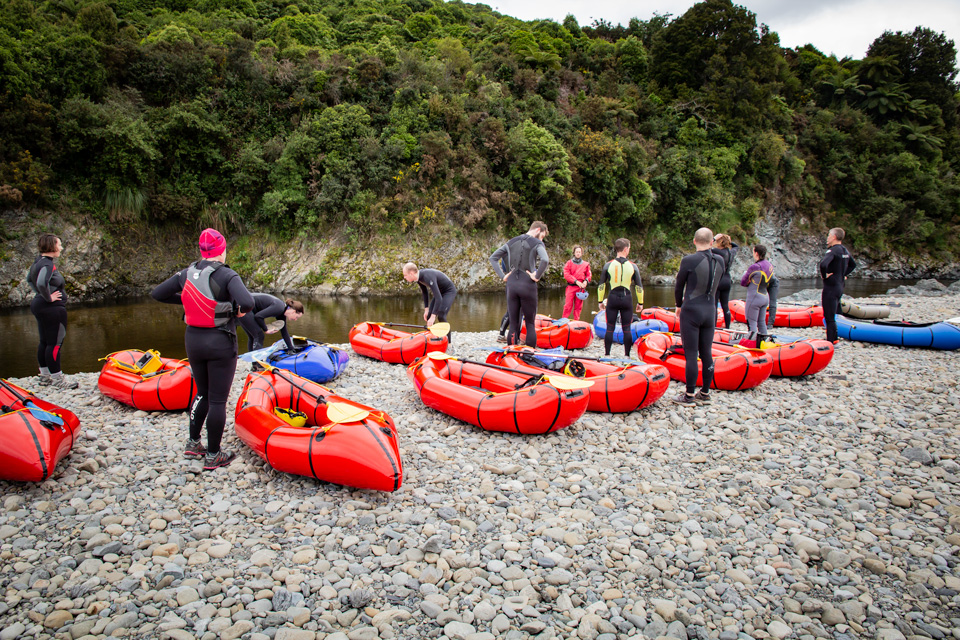What a lark! Hooning down the Tararua rivers in a 1.6 kg inflatable dinghy—including all the kit (floatation device (PFD) and paddle). Welcome to the wonderful world of packrafting!
Having had a very harebrained thought to do just the same thing by myself a few years ago, except with questionable gear, no training and no concept of safety, I was delighted to see a fully-fledged packrafting Skill and Safety COURSE on the trip schedule! Arno and his trusty sidekick Andy had been flown/bused from their Te Anau based Expedition X Packrafting New Zealand to teach the 15 newbies how to properly paddle a packraft.
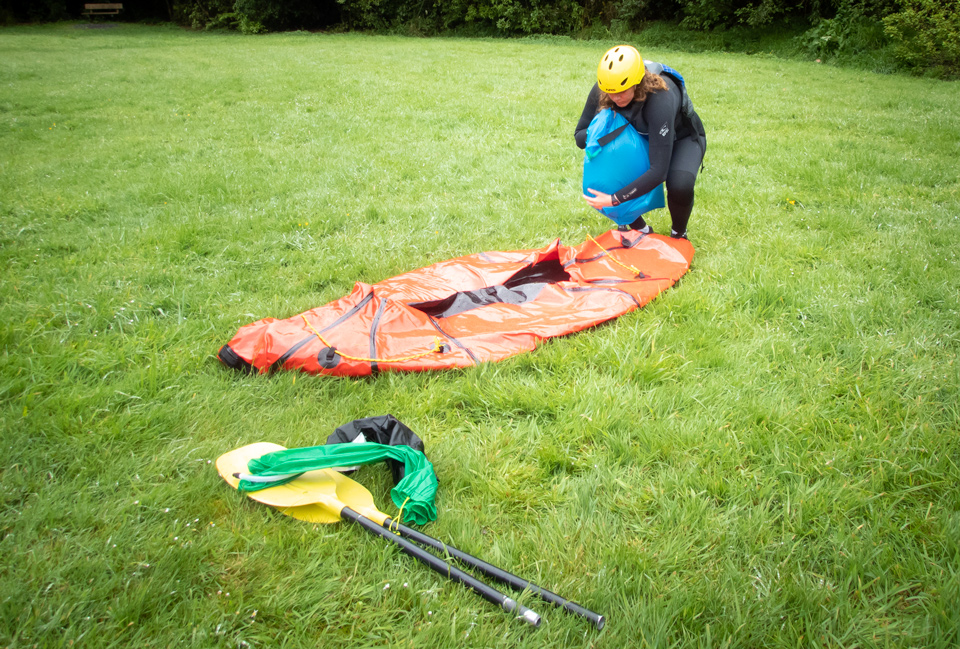
Day 1 involved a jaunt in the upper reaches of the Hutt River. We started with a talk about packrafts and what we were about to do. By the sounds it was going to be a very intensive two-day course with a lot of stuff packed in. We started by donning wetsuits and inflating packrafts with a nylon bag—talk about an ultralight pump. We left the packrafts for a time being and started the swimming part of the curriculum. We learned how to shallow water entry (diving into rapids with your arms protecting your face) and defensive and aggressive swimming/floating posture. Arno was at pains to point out that the #1 thing likely to kill you would be a delightfully termed “foot entrapment hazard” or in layman’s language getting your foot caught in a rock or tree underwater and being drowned by the current—thus the importance of keeping your feet high and on the surface of the water.
We then got into the packrafts for a bit of a paddle. The packrafts are surprisingly stable and manoeuvrable and much less tippy compared to single sea kayaks. The whole group had some practice at finding pools of slow moving water to the side of the river (eddies), which we learned are safe shelter spots when running a river. Then came the fun of tipping out to practice team and self-rescue. Unlike a kayak, team and self-rescues are much more forgiving in a packraft.
We finished the day with some more swimming, diving into a ‘feisty’ Class 1 rapid, and practicing rope rescues before paddling back to our starting point. What a difference a day makes!
We were relieved to find out the next day that the water quality level of the Hutt River at Silverstream is ‘Green’ by council standards, compared to ‘Brown’ by the time it gets to the Melling Bridge.
The next day our plan was to run the Otaki River! Overnight rain turned the Otaki into a murky shade of brown and the water level was up slightly—which our instructors assured us is a good thing! The first rapid was downright menacing Grade 2+ according to Arno, and we made the decision to portage our boats around the curve. Andy showed us how it’s done, and it required some precision paddling to find the right line and avoid the rocks, holes and other obstacles.
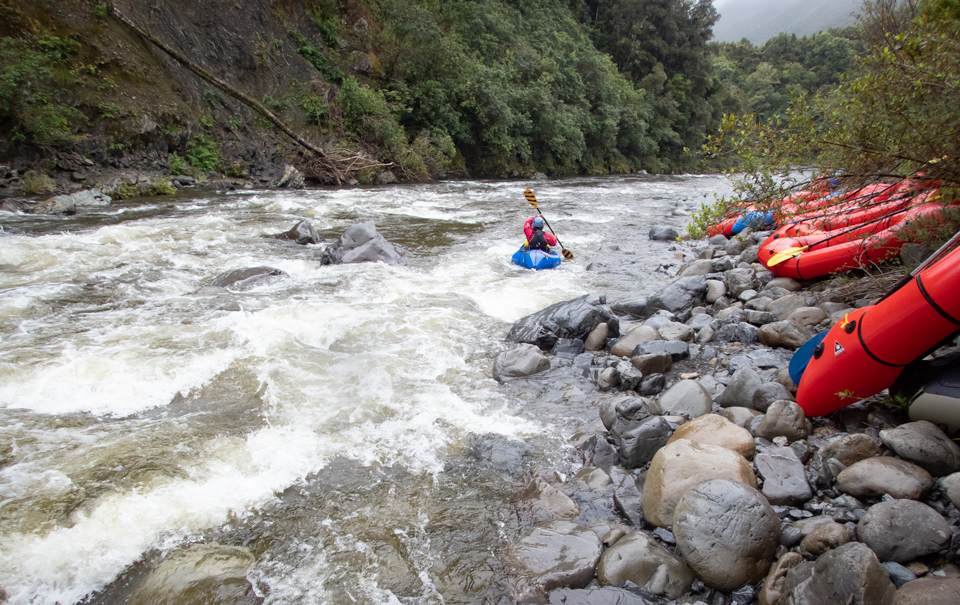
We were then away in our buddy teams to run the first rapid—so far so good, no casualties! We made our way down the river, stopping at each rapid, portaging some of the more gnarly ones, while Arno and Andy explained and demonstrated to us the best line to take and what to watch out for.
After a few sets of rapids everyone was settled in their boats. We started going into a left-handed set of rapids, when I hear ‘SWIMMER’! the universal code for someone euphemistically being dumped out of their packraft. Turns out it was Tony, and just as I processed that, I saw a large cauldron of boiling water right in the middle of the river, a few paddles to the right and—I was heading straight for it! Just as I thought I was out after a couple of bumps, I was dumped backwards into the current! A shock realisation of my imminent predicament hit me and I remembered the training from the day before. Instinctively grabbing hold of the boat and paddle and even managing to turn the boat the right way! Unfortunately self-rescue was beyond me, adrenalin was shooting through. I floated by a few bemused still-boated paddlers, who afterwards assured me I looked calm and in control (I was NOT). Luckily Catherine braced my runaway boat alongside hers and got the paddles across for a team rescue. I got to the shore, wet and shaking but alive. I guess packrafting is a bit like Alpine—if you fall, remember what to do—and pray for good run-out. Afterwards Arno explained that I had committed the cardinal sin of letting my feet touch the bottom (foot entrapment hazard) but come on, I thought I could walk out that point!
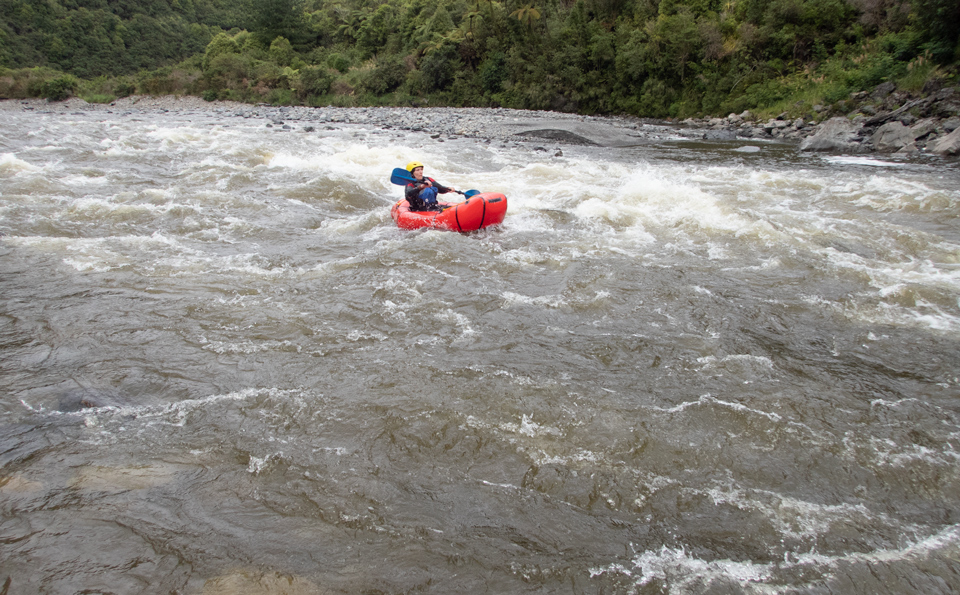
After a couple more rapids (including an optional one) we had come to a blind right-left combination. We could hear the rapids, but could not see them—apparently one of the more common situations in packrafting where you are scouting from the boat. Going as one of the last groups I could see a crowd on the inside shore, pointing to something in the water as I went into the first curve. Right then I could see a big gnarly rock, with white water pouring over the top, it spun me 180 degrees and almost dumped me out, but luckily I was able to brace along the sides. So much for the good news, I was now hurtling down the left hand part of the curve literally without a paddle. Having made the sign for a lost paddle (two fists above head, banging them together) I was helpless watching the paddle drift mere metres away from me. One bump, two bump. At least Arno is downstream to rescue me this time. But miraculously, I managed to get down the rapid, backwards, without a paddle, and still in my boat! Easy as!
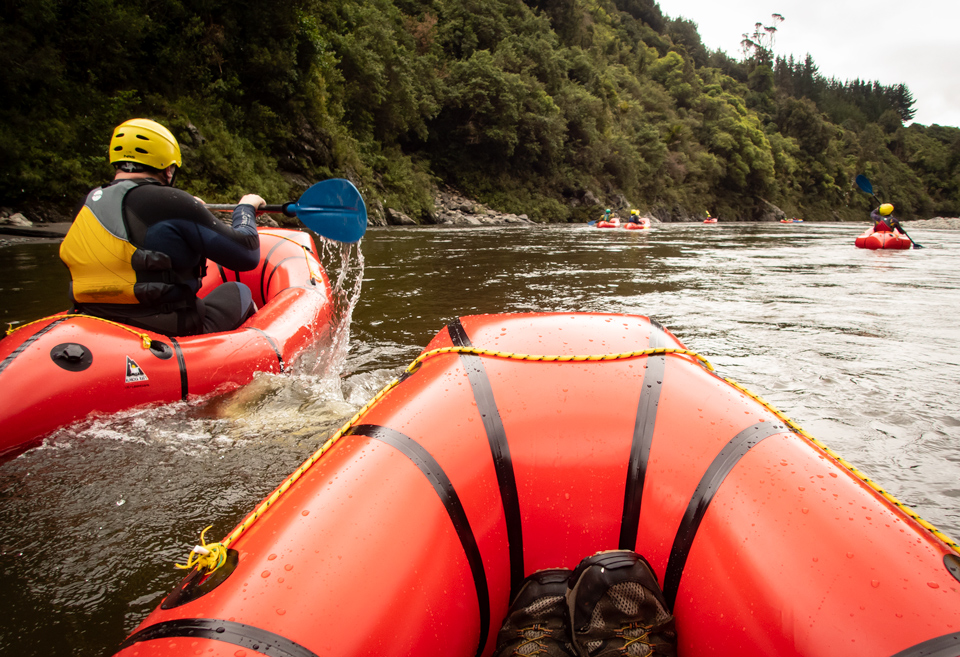
We got to the Otaki Gorge Bridge by about 3 pm. Arno informed us that we will not be in the water for the rest of the day. A mighty cheer went up from the heroes of WTMC, knowing a great fun and adrenaline packed day was coming to an end! We packed up our gear and went to the Salt and Wood Collective for a well-earned beer, burger and debrief, where we gave our thanks to Arno and Andy.
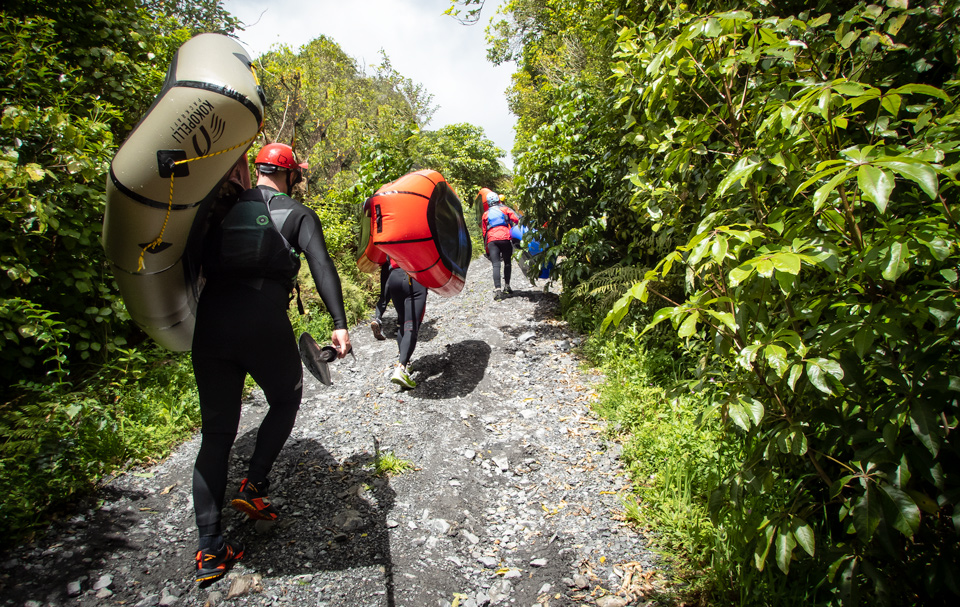
Give packrafting a go, it’s good fun! Just make sure you have some experience, or better yet do a packraft training course first.

